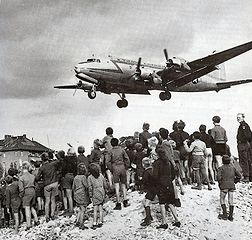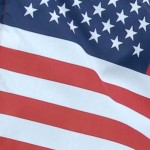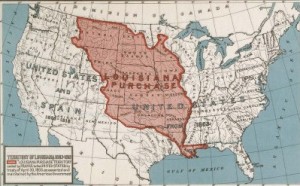Louisiana Purchase was finalized in 1803, doubling the size of the United States. The agreement included all the land west of the Mississippi to the continental divide of the Rocky Mountains. Children could learn more at: Louisiana Purchase.
Cinco de Mayo is celebrated in Mexico and the United States. The Battle of Puebla took place in 1862. General Ignacio Zaragoza led his Mexican army, outnumbered three to one, against Napoleon III’s French forces. Zaragoza won. Speeches, festivals, and parades are held nationwide. Young children could read Cinco de Mayo by Mary Dodson Wade. Idea: Children could have a Cinco de Mayo celebration. A piñata should be included.

Berlin Airlift
Berlin airlift began in 1948. After World War II, Germany was divided into four parts. The Soviet Union controlled the portion that held Berlin. Berlin itself had been divided into four parts. Hoping to create a blockade, the Soviet Union denied access to the city. The United States, France, and Great Britain responded, via “Operation Vittles,” by airlifting food and other supplies into Berlin. Over 2,300,000 tons of supplies were lifted in via 277,000 flights. The airlift lasted until May 12, 1949.
Early Bird satellite (Intelsat I) in 1965 made telephone calls from the United States to Europe more practical. It also helped television transmissions. Expected to last about eighteen months, it was active for four years four months. It was reactivated briefly in 1990 to celebrate its 25th anniversary, and it remains in orbit. Idea: Children could find out how calls were made before the satellite and how the satellite worked. They could also learn more at: Early Bird.
 United States celebrates Independence Day. It declared itself free of English rule in 1776. Interestingly, only two people, John Hancock and Charles Thompson, signed the Declaration of Independence that day. Most of the representatives signed the document on August 2, 1776. Idea: Children could read Fireworks, Picnics, and Flags: The Story of the Fourth of July Symbols by James Cross GIblin and Ursula Arndt. Children could plan and carry out a Fourth of July parade. They could also learn more at: Fourth of July.
United States celebrates Independence Day. It declared itself free of English rule in 1776. Interestingly, only two people, John Hancock and Charles Thompson, signed the Declaration of Independence that day. Most of the representatives signed the document on August 2, 1776. Idea: Children could read Fireworks, Picnics, and Flags: The Story of the Fourth of July Symbols by James Cross GIblin and Ursula Arndt. Children could plan and carry out a Fourth of July parade. They could also learn more at: Fourth of July.
Statue of Liberty was given to the United States by France in 1884. The statue was presented to Levi P. Morton, the US ambassador to France, in Paris. The statue was then taken apart and shipped to the United States. The statue reached our shores on June 17, 1885. However, the pedestal was not yet ready. The statue was formally revealed on October 28, 1886. Children can learn more at an excellent site: Statue of Liberty.
United States and Canada in 1932 agreed on a treaty to complete the St. Lawrence Seaway. However, bills for various plans from both countries failed, and World War II intervened. The Seaway finally opened on April 25, 1959. Children can learn more at: http://www.youtube.com/watch?v=523nDGCLKUE.
Census was taken in the United States for the first time in 1790. The census is taken every ten years; a number of economic and government decisions are based on the census and changes in census data. Idea: Children could take a mock census in their classrooms. They could also learn more at an amazing website: https://www.census.gov/schools/.
United States levied the first income tax in 1862. Any income over $800 was taxed at 3 percent. Idea: Children could translate $800 back then into today’s dollars. They could learn more about the history of the United States income tax at: http://www.infoplease.com/ipa/A0005921.html.


